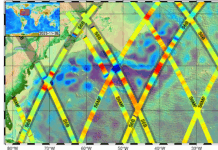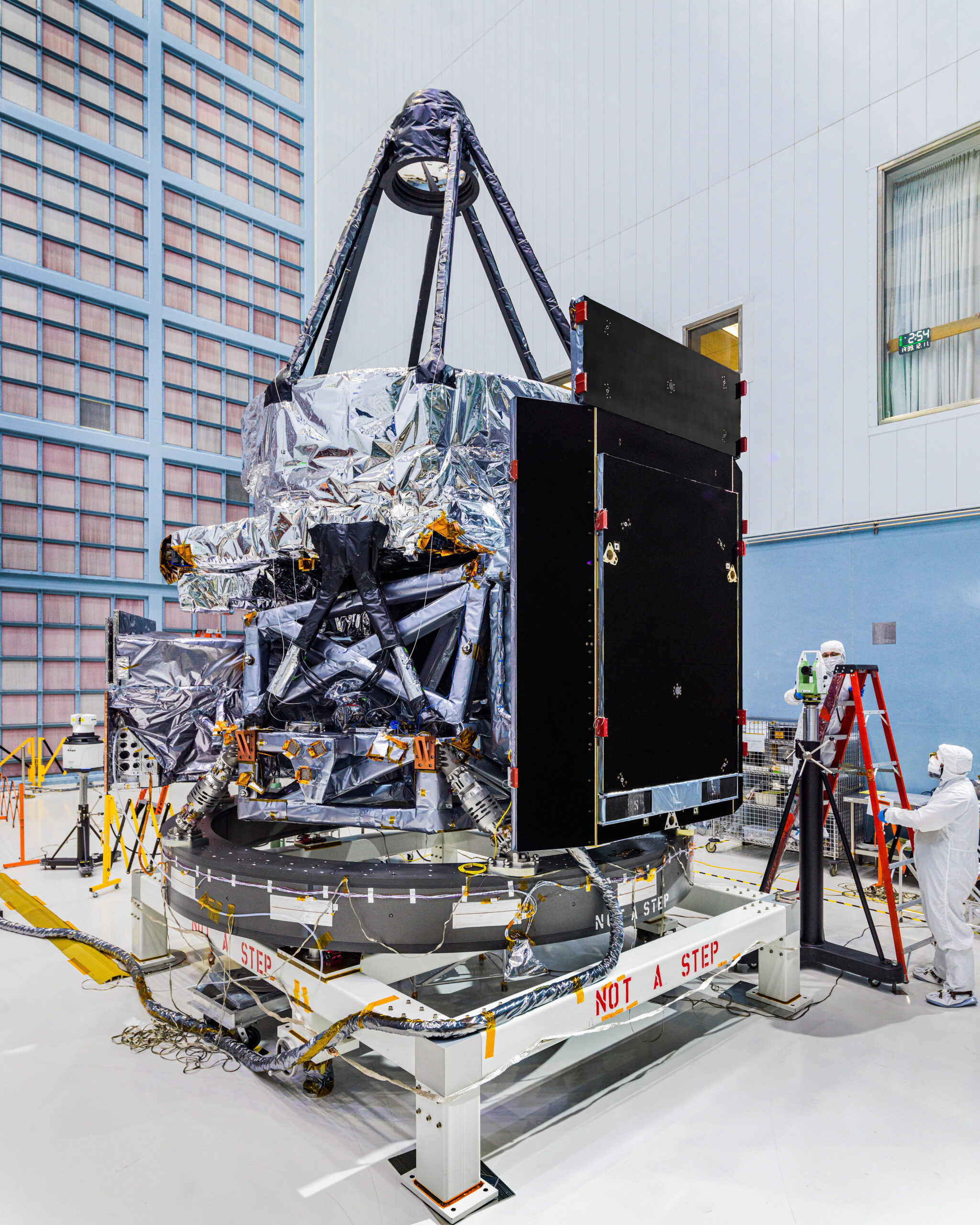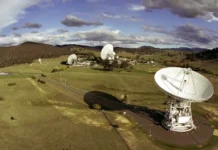The Nancy Grace Roman Space Telescope, a significant upcoming mission from NASA, has reached a crucial milestone with the successful integration of its telescope and two essential scientific instruments onto the instrument carrier. This marks the completion of the telescope’s payload, and now the focus shifts to attaching this payload to the spacecraft at NASA’s Goddard Space Flight Center in Greenbelt, Maryland.
Jody Dawson, a systems engineer at NASA Goddard, shared the excitement of the ongoing progress, emphasizing that all components are now housed at Goddard and are being assembled rapidly. The team anticipates that the telescope and its instruments will be fully integrated with the spacecraft by the end of the year.
The first step in this integration process involved the Coronagraph Instrument. This cutting-edge technology is designed to capture images of exoplanets, which are planets located outside our solar system. The Coronagraph Instrument achieves this by employing a sophisticated array of masks and active mirrors to block out the bright light of stars, making the faint light from orbiting exoplanets visible.
Following this, the Optical Telescope Assembly was integrated. This assembly is a marvel of engineering, featuring a primary mirror that measures 7.9 feet (2.4 meters) in diameter, along with nine additional mirrors and their supporting structures and electronics. The telescope is tasked with gathering and focusing light from distant cosmic objects, channeling it to Roman’s instruments to reveal billions of celestial bodies across the vast expanse of space and time. Remarkably, Roman will be the most stable large telescope ever constructed, offering at least ten times the stability of NASA’s James Webb Space Telescope and one hundred times that of the Hubble Space Telescope. This enhanced stability is crucial for making highly precise measurements, addressing significant scientific questions related to dark energy, dark matter, and the exploration of worlds beyond our solar system.
With these components securely in place, the team proceeded to add Roman’s primary instrument, known as the Wide Field Instrument. This 300-megapixel infrared camera will provide Roman with an expansive, panoramic view of the universe. Through the surveys conducted by the Wide Field Instrument, scientists will delve into the mysteries of distant exoplanets, stars, galaxies, black holes, dark energy, dark matter, and much more. The instrument’s efficiency and the observatory’s advanced capabilities will enable Roman to image vast sections of the sky 1,000 times faster than the Hubble Space Telescope, all while maintaining the same high-quality, detailed images.
Julie McEnery, the senior project scientist for the Roman mission at NASA Goddard, highlighted the revolutionary nature of the telescope. According to McEnery, the Roman Space Telescope will transform our approach to astronomy, offering capabilities that far exceed any previously available tools.
The integration of the telescope and instruments onto Roman’s instrument carrier took place in the largest clean room at NASA Goddard, where the observatory is being assembled with precision. The next step involves attaching the entire assembly to the spacecraft, which will transport Roman to its designated orbit and ensure it functions optimally once there.
Simultaneously, the mission’s deployable aperture cover, a visor designed to protect the telescope from unwanted light, is being affixed to the outer barrel assembly, which acts as the telescope’s exoskeleton.
Bear Witherspoon, another systems engineer working on the Roman mission at NASA Goddard, expressed enthusiasm about the progress made so far and the exciting developments to come. While the payload and spacecraft undergo various tests together, the team will also focus on integrating the solar panels onto the outer barrel assembly. These steps keep the observatory on track for completion by fall 2026, with a planned launch no later than May 2027.
For those interested in exploring the Roman Space Telescope further, a virtual interactive tour is available online, providing an in-depth look at the telescope’s features and capabilities.
The Nancy Grace Roman Space Telescope is managed by NASA’s Goddard Space Flight Center, with significant contributions from NASA’s Jet Propulsion Laboratory and Caltech/IPAC in Southern California, as well as the Space Telescope Science Institute in Baltimore. The mission also boasts a diverse science team comprised of scientists from numerous research institutions. Key industrial partners in this endeavor include BAE Systems Inc. in Boulder, Colorado; L3Harris Technologies in Rochester, New York; and Teledyne Scientific & Imaging in Thousand Oaks, California.
This mission promises to open new frontiers in our understanding of the universe, addressing a wide range of astronomical topics and potentially answering some of the most profound questions about the cosmos. With its advanced technology and unparalleled capabilities, the Roman Space Telescope is poised to become a pivotal tool in the field of astronomy, significantly enhancing our ability to explore and comprehend the universe.
For more Information, Refer to this article.


































